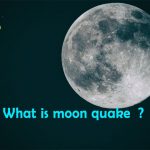Do you know the speed of electricity ?

Electricity is one of essential thing we need..right ? Do you want to know indepth about that? Lets see…. Electricity is the presence and flow of electric charge. Using electricity we can transfer energy in ways that allow us to do simple chores. Its best-known form is the flow of electrons through conductors such as copper wires.
The word “electricity” is sometimes used to mean “electrical energy”. They are not the same thing: electricity is a transmission medium for electrical energy, like sea water is a transmission medium for wave energy. An item which allows electricity to move through it is called a conductor. Copper wires and other metal items are good conductors, allowing electricity to move through them and transmit electrical energy. Plastic is a bad conductor (also called an insulator) and does not allow much electricity to move through it so it will stop the transmission of electrical energy.
Transmission of electrical energy can happen naturally (such as lightning), or be made by people (such as in a generator). It can be used to power machines and electrical devices. When electrical charges are not moving, electricity is called static electricity. When the charges are moving they are an electric current, sometimes called ‘dynamic electricity’. Lightning is the most known – and dangerous – kind of electric current in nature, but sometimes static electricity causes things to stick together in nature as well.
Electricity can be dangerous, especially around water because water is a form of good conductor as it has impurities like salt in it. Salt can help electricity flow. Since the nineteenth century, electricity has been used in every part of our lives. Until then, it was just a curiosity seen in the lightning of a thunderstorm.
Amazing facts about electricity
Thomas Edison built the first power plant, and in 1882 his Pearl Street Power Station sent electricity to 85 buildings. People were initially afraid of electricity and parents would not let their children near the lights.
Thomas Young was the first to use the word “energy” in its current sense, replacing the traditional term vis viva, meaning “living force.”
Electricity travels at 6,696,000 miles per hour.
Electricity plays an important role in the way your heart functions. Muscle cells in the heart are contracted by electricity that runs through your body.
Only 10 percent of energy in a light bulb is used to create light. Ninety percent of its energy creates heat. Compact fluorescent light bulbs (CFLs) use about 80 percent less electricity than conventional bulbs and last up to 12 times longer.
Refrigerators in the U.S. consume about the same amount of energy as 25 large power plants produce each year.
Enough sunlight reaches the earth’s surface each minute to satisfy the world’s energy demands for an entire year.
What’s a Volt? A unit of electric force, measuring the potential strength of current.
The typical lightning bolt packs 100 million volts.
The average taser emits 50,000 volts.
A spark of static electricity can measure up to 3,000 volts.
Electric eels can produce shocks of 500 volts or more.
The amount of energy Americans use doubles every 20 years. And between 2008 and 2030, world energy consumption is expected to increase more than 55 percent.
Overall, coal makes up 2/5 of the world’s electricity generation, with the U.S. producing half of its electricity in that manner. China uses coal to generate more than three-fourths of its electricity. Australia, Poland, and South Africa produce an even greater percentage.
Appliances also use electricity when they’re switched off. The average desktop computer idles at 80 watts, while the average laptop idles at 20 watts. A Sony PlayStation 3 uses about 200 watts, both when it’s active and when it’s idle.
LED light bulbs use about one-sixth of the electricity that conventional bulbs do, cost about a quarter as much to use, and last about 40 times longer.
A typical microwave oven consumes more electricity powering its digital clock than it does heating food
As an example of how much more efficient modern appliances are, a fridge from the mid-80s, 30 years ago, used four times as much electricity as a modern one (about 1400 kWh a year compared to 350 kWh).
















